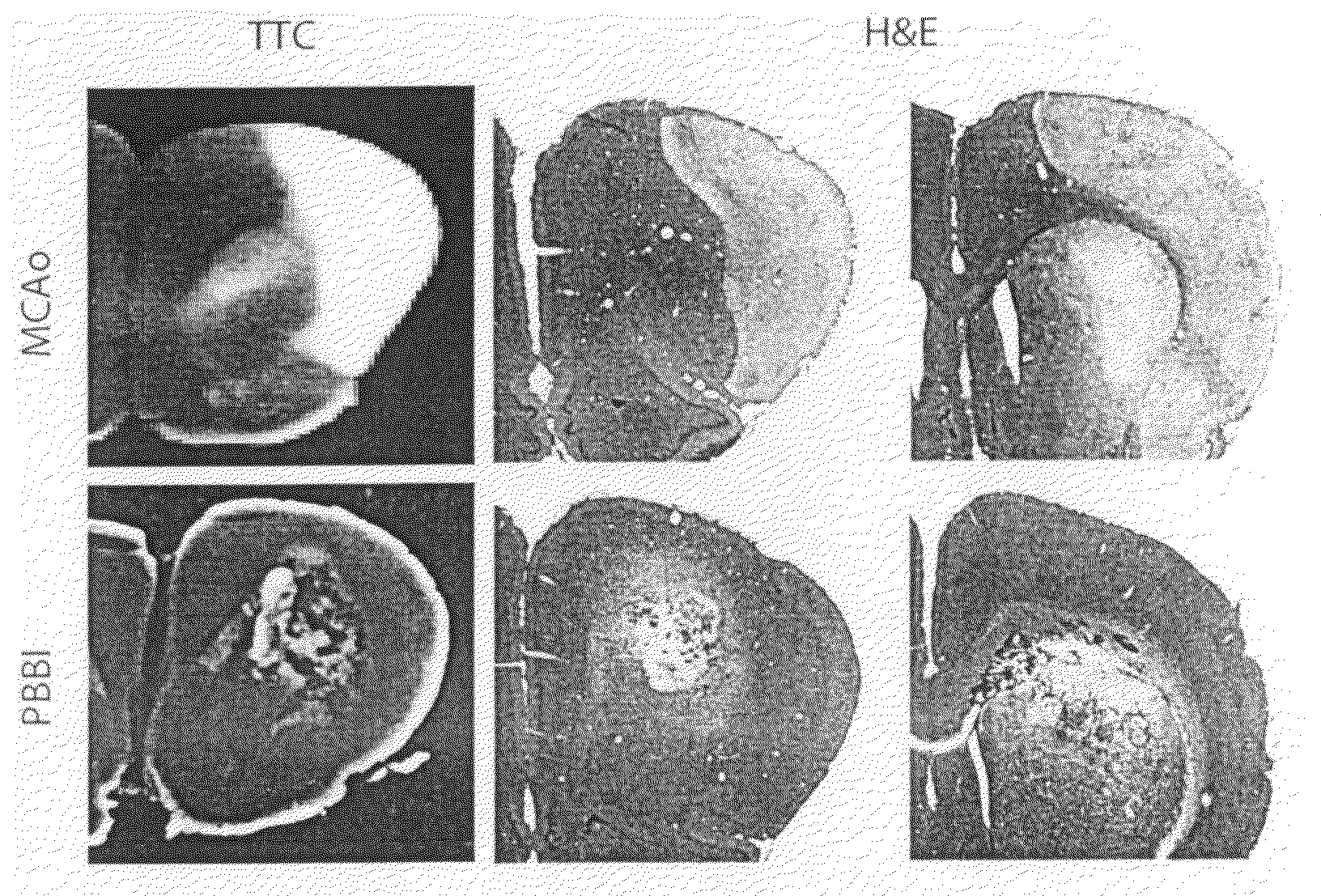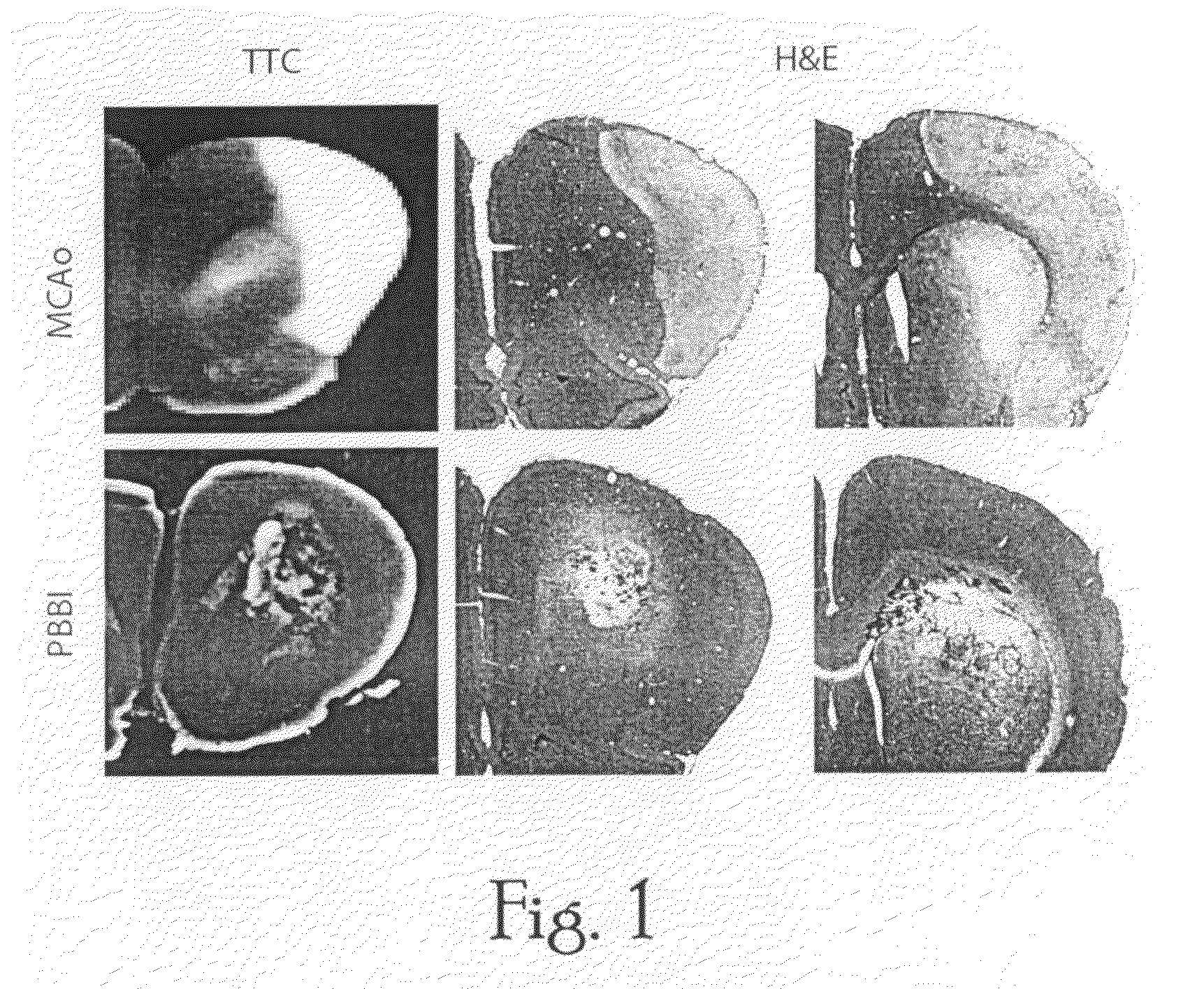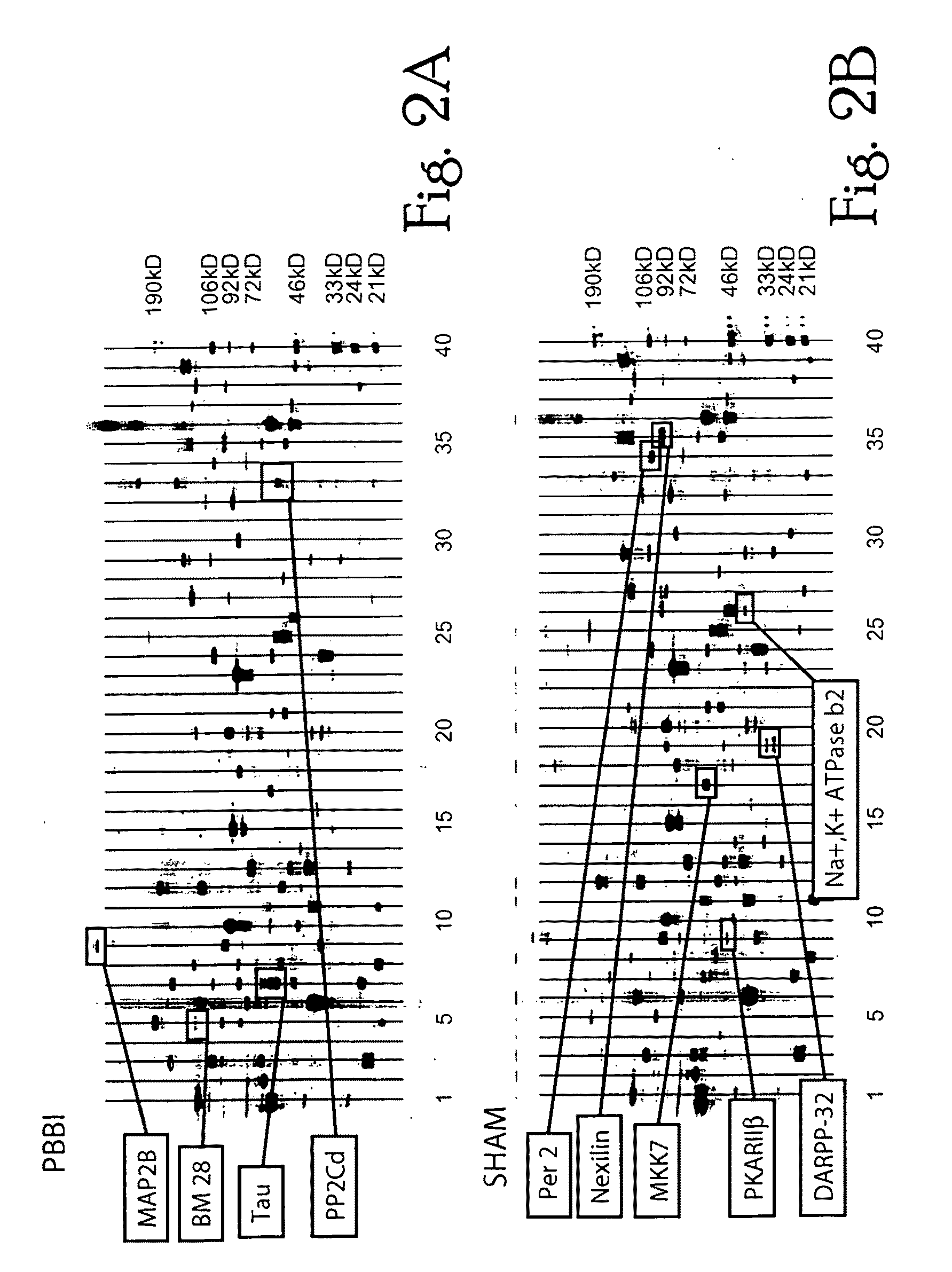Endothelial-monocyte activating polypeptide II, a biomarker for use in diagnosis and treatment of brain injury
a technology of endothelial monocytes and endothelial monocytes, which is applied in the field of polypeptides and endothelialmonocyte activating polypeptides ii (emapii), can solve the problems of traumatic brain injury being a leading cause of death and disability, tbi being a significant health problem for the uniformed services, and combat medics not equipped with the requisite skills to accurately diagnose and triage brain injury casualties
- Summary
- Abstract
- Description
- Claims
- Application Information
AI Technical Summary
Benefits of technology
Problems solved by technology
Method used
Image
Examples
Embodiment Construction
[0027]In the current study, the inventors applied high-throughput immunoblotting technology (HTPI; BD PowerBlot™) (Liu et al., 2006a) to study large scale differential protein patterns in rat brains 24 hours after either a penetrating ballistic-like brain injury (PBBI) (Williams et al, 2005; Williams et al. 2006a; Williams et al. 2006b) or middle cerebral artery occlusion (MCAo) (Tortella et al., 1999). Specifically, the inventors focused on identifying proteins with measurable changes in protein abundance following acute brain injury. They further hypothesized that a subset of those proteins would cross the BBB to be detected in blood. The value of this approach was demonstrated when five proteins (STAT3, Tau, PKARIIβ, 14-3-3H and p43 / EMAP-II), identified by our HTPI assay, were immunodetected as proteins released differentially into blood of PBBI or MCAo injured rats. It was found that the p43 / EMAP-II candidate biomarker proved highly sensitive to detecting and distinguishing type...
PUM
| Property | Measurement | Unit |
|---|---|---|
| thick | aaaaa | aaaaa |
| length | aaaaa | aaaaa |
| length | aaaaa | aaaaa |
Abstract
Description
Claims
Application Information
 Login to View More
Login to View More - R&D
- Intellectual Property
- Life Sciences
- Materials
- Tech Scout
- Unparalleled Data Quality
- Higher Quality Content
- 60% Fewer Hallucinations
Browse by: Latest US Patents, China's latest patents, Technical Efficacy Thesaurus, Application Domain, Technology Topic, Popular Technical Reports.
© 2025 PatSnap. All rights reserved.Legal|Privacy policy|Modern Slavery Act Transparency Statement|Sitemap|About US| Contact US: help@patsnap.com



